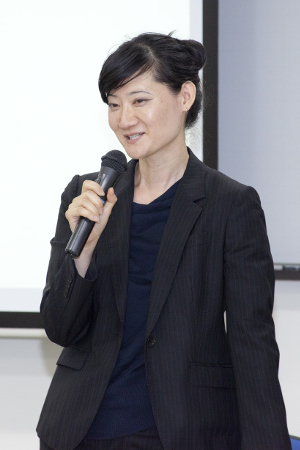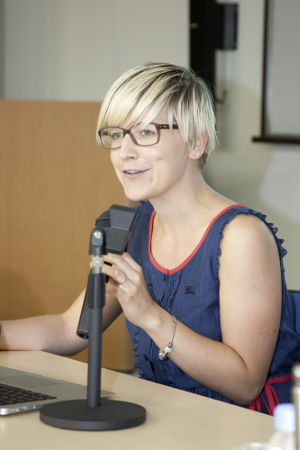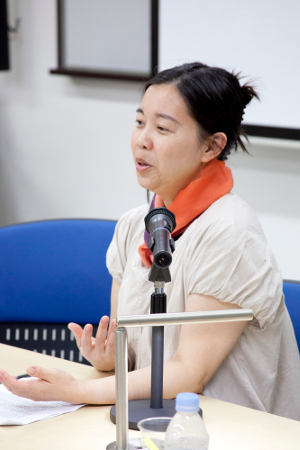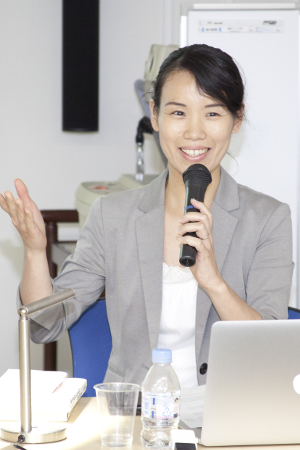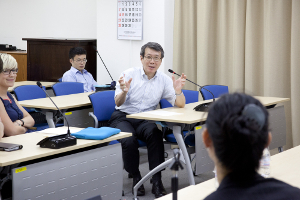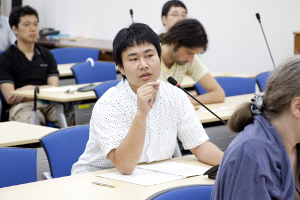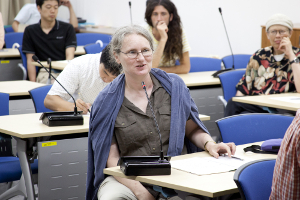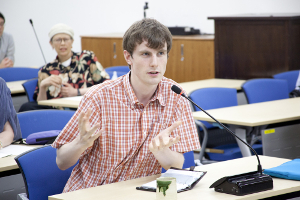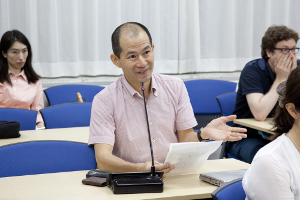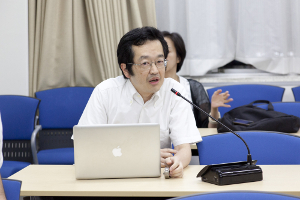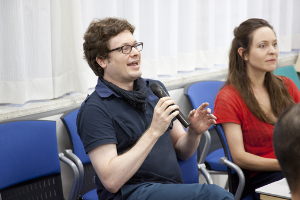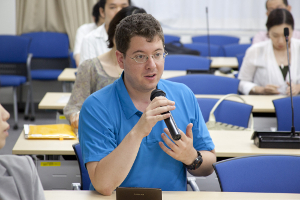News
東文研シンポジウム "Beyond Established Categories in World Historical Studies" が開催されました
日時:2013年7月24日(水)16時から18時30分
Date: July 24, 2013 (Wed) 16:00-18:30
場所: 東京大学・東洋文化研究所・3階大会議室
Venue: Main conference room, 3rd floor, Institute for Advanced Studies on Asia (Tobunken), The University of Tokyo
報告
| Paper 1: | From Comparative Study to Transnational Art History Ukai Atsuko |
| Paper 2: | The Making of Europe in 16th century East Asia Birgit Tremml |
| Paper 3: | When "China's West" became "Europe's Orient" Vimalin Rujivacharakul |
| Paper 4: | "Islamism" Revisited Goto Emi |
| General Discussion | |
| General Discussion | 司会:鳥山純子 Chair: Toriyama Junko |
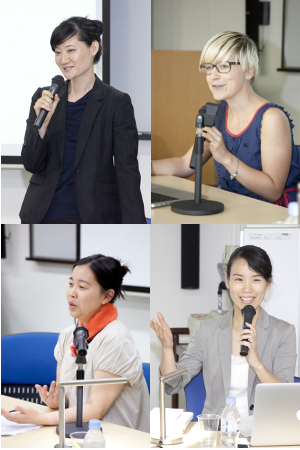
報告 Report:
This symposium focused on one of the most foundational attributes in historical studies: categories. Born of the need to classify subjects of inquiries, categories enable historians to label the unfamiliar and place it within the known universe. Yet this seemingly helpful condition has also created a gridlock in the construction of modern knowledge, for historians can only operate within the matrix established by those categories’ parameters. Inquiries that do not fit within the preexisting systems are either treated as unintelligible or left unexplored.
Would there be a way to escape this order of things that has long governed our ways of learning about the past? Four papers addressed this inquiry from four different perspectives.
In the first paper, Atsuko questioned common practices in Art History that typically classified art objects into categories. She pointed out that these categories created the unnecessary pattern of comparative studies, as has been the case with the study of Japonisme. To counter the established approach, her paper presented a history of book binding with examples from the Bibliothèque municipale de Nancy in France. By demonstrating how designs and techniques and for producing gilded leather were imported from Europe to Japan in the 19th century, and then exported back to France, she offered a new approach to redefine Japonisme as a transnational art history, rather than a comparative history focusing on a one-dimensional importation of art influence from Japan to France.
In the second paper, The Making of Europe in 16th century East Asia, Birgit Tremml asked how ‘Europe’ was employed as a generic term in the cross-cultural context of East Asia. Her paper showed that referring explicitly to Europe (the West / the Occident) was uncommon among sixteenth century-writers from Portugal, Spain or England. However, she argued, other sources such as world maps indicated an awareness of the category, at least within the studied circles. Accounts drafted in China, Japan and the Philippines, further suggested a shift in applying the term towards the end of the century, above all in overseas ecclesiastic writings.
Vimalin Rujivacharakul followed up with her paper: When China's “West” became Europe's “Orient.” Focusing on two sets of written evidence—correspondence from eighteenth-century missionaries in Qing-dynasty China and writings by nineteenth-century authors in France—she documented the ways in which French descriptions of the Yuanming Yuan palace had changed, from an example of European-style architecture in China to the epitome of Oriental architecture. Through this examination, her paper illustrated the shape-shifting positions within the East-West binary and argued that the construction of “European” as an architectural category depended heavily on the placement of “China” in the history of architecture.
In the last paper, “‘Islamism’ Revisited,” Goto Emi talked about the historical background and development of “Islamism” as a categorical term in the Japanese academic context. She argued that, although “Islamism” played a role in distinguishing characteristics of certain activities or movements in the past decades, the term, as a categorical embodiment, has become less valid nowadays due to changes in world politics, especially after the “Arab Spring” movements. To demonstrate, Goto examined different cases in which “Islamism” was deployed in post-revolutionary Egypt, and showed how its categorical conditions have caused confusions and problematic representations. She concluded her paper by proposing that the need to reconsider an established sociopolitical category such as “Islamism” often arises as sociopolitical situations change.
***
Given the four papers’ contents, it is not surprising that the panel’s discussion duly focused on two main questions: how to overcome established categories in world history and how to approach older, inadequate categories in new research projects. The speakers and their audience also shared an understanding that the boundaries of each category change over time and that its validation also varies according to each discipline and research subject. They also agreed that most of the established categories in academia are to a large extent a legacy of the nineteenth century. Due to the lingering impact of Western imperialism in world historical studies, narratives and terminology in the field continue to determine our overall perceptions of both historical subjects and their epochal developments. Professor Haneda Masashi, to whom this symposium has been dedicated, concluded the discussion by appealing for a new platform that can address such far-reaching problems of categories from interdisciplinary perspectives.
|
|
|
|

|
|
|
|
|
|
|
|
登録種別:研究活動記録
登録日時:ThuAug116:31:482013
登録者 :鵜飼・後藤・野久保(撮影)・藤岡
掲載期間:20130724 - 20131024
当日期間:20130724 - 20130724

